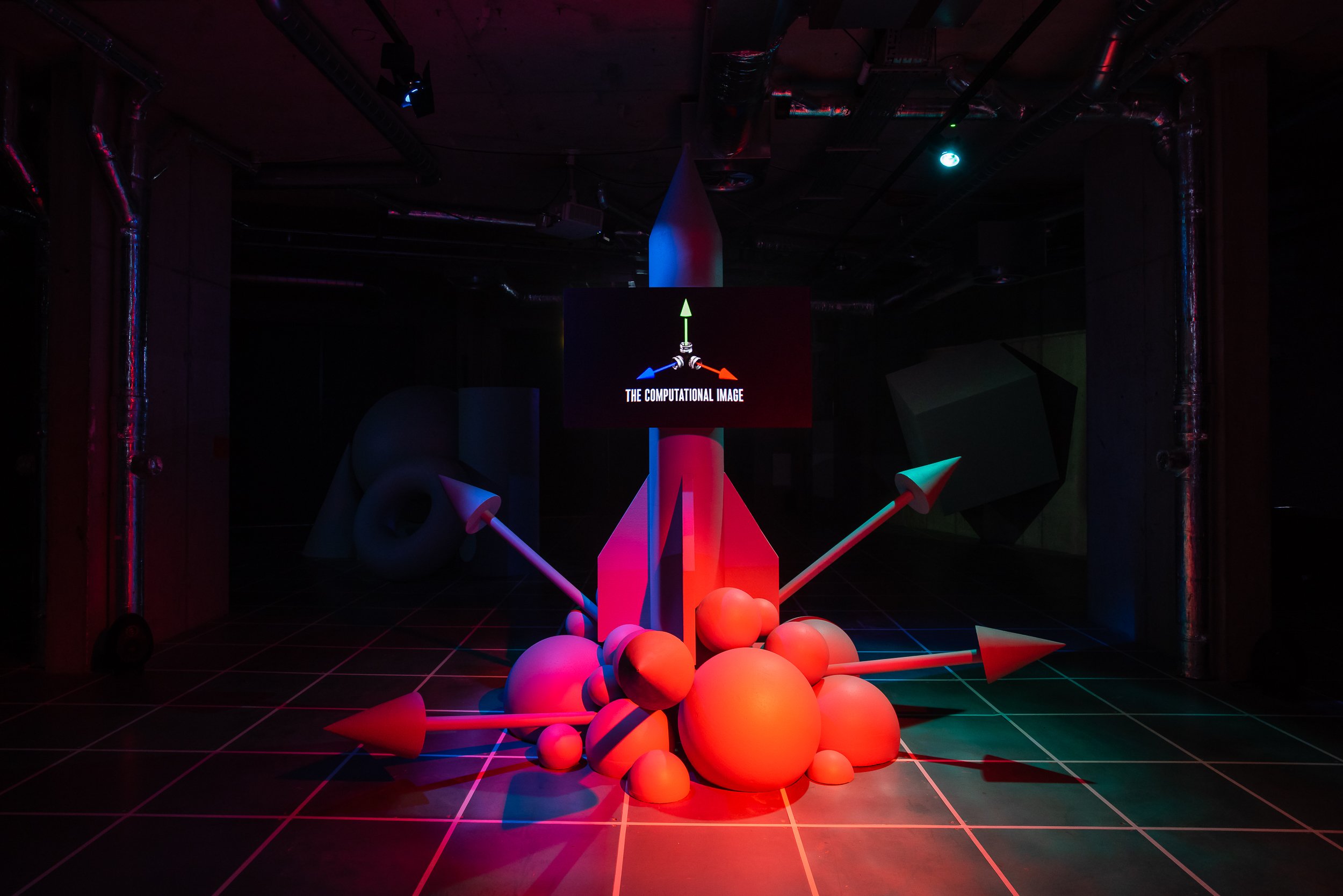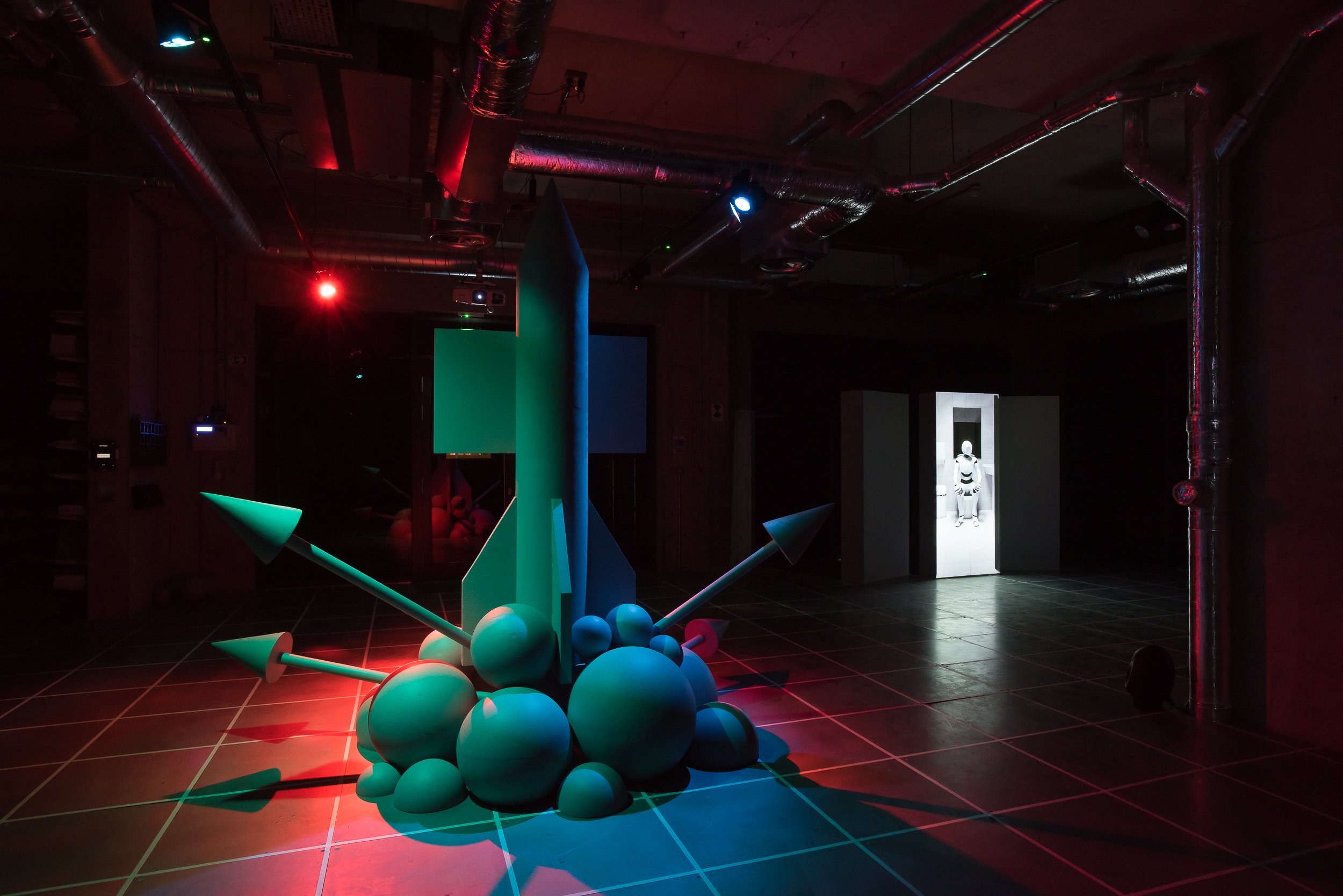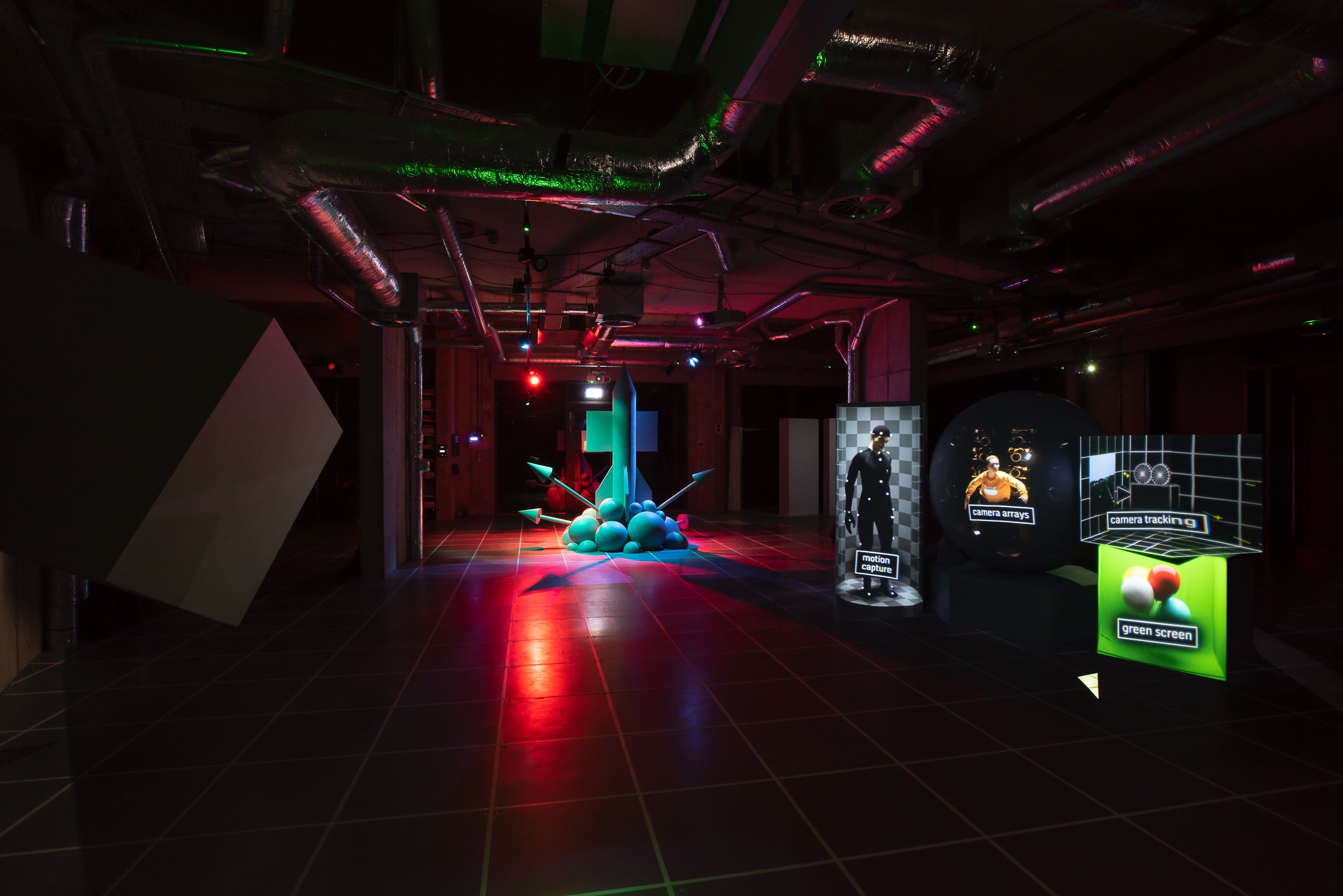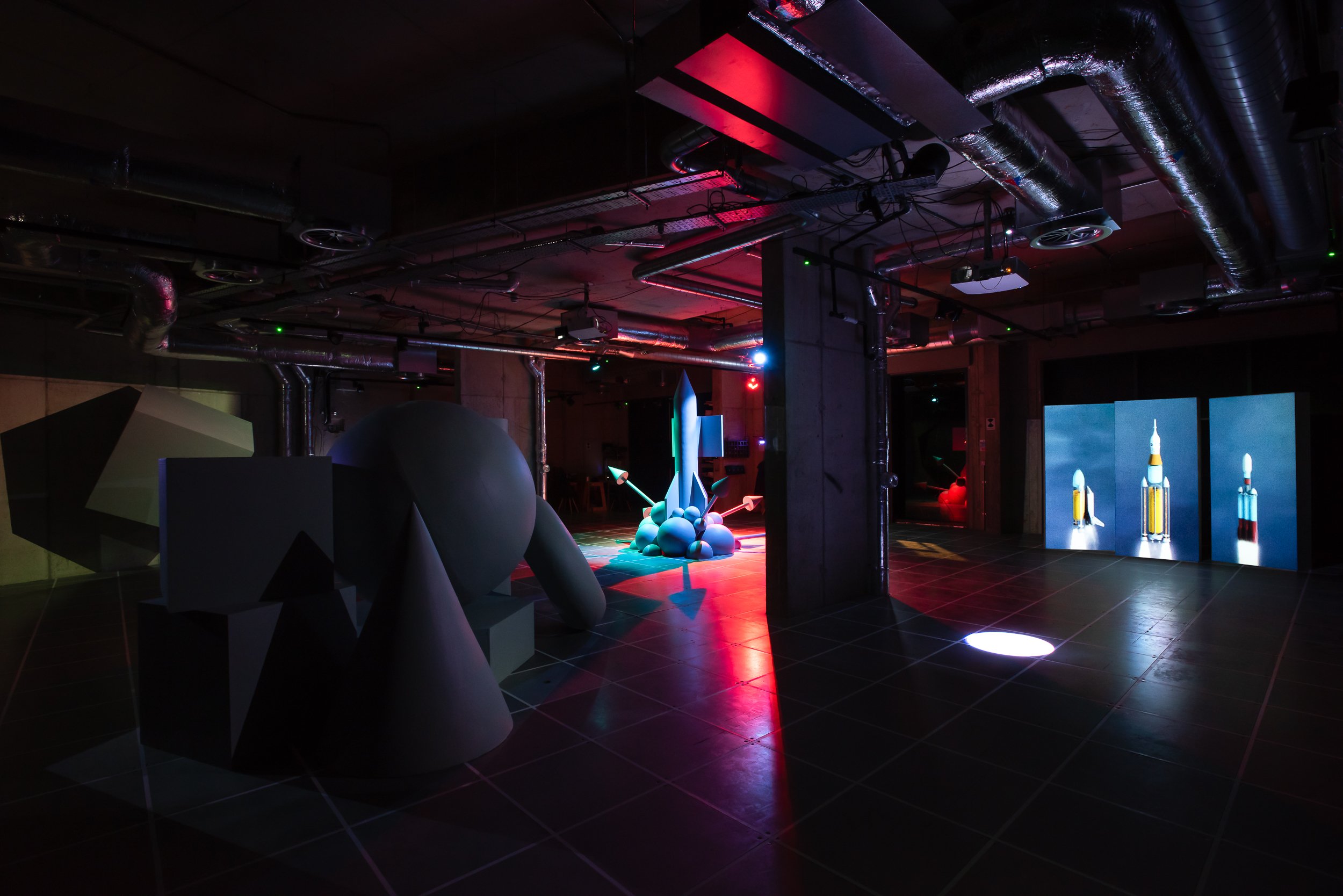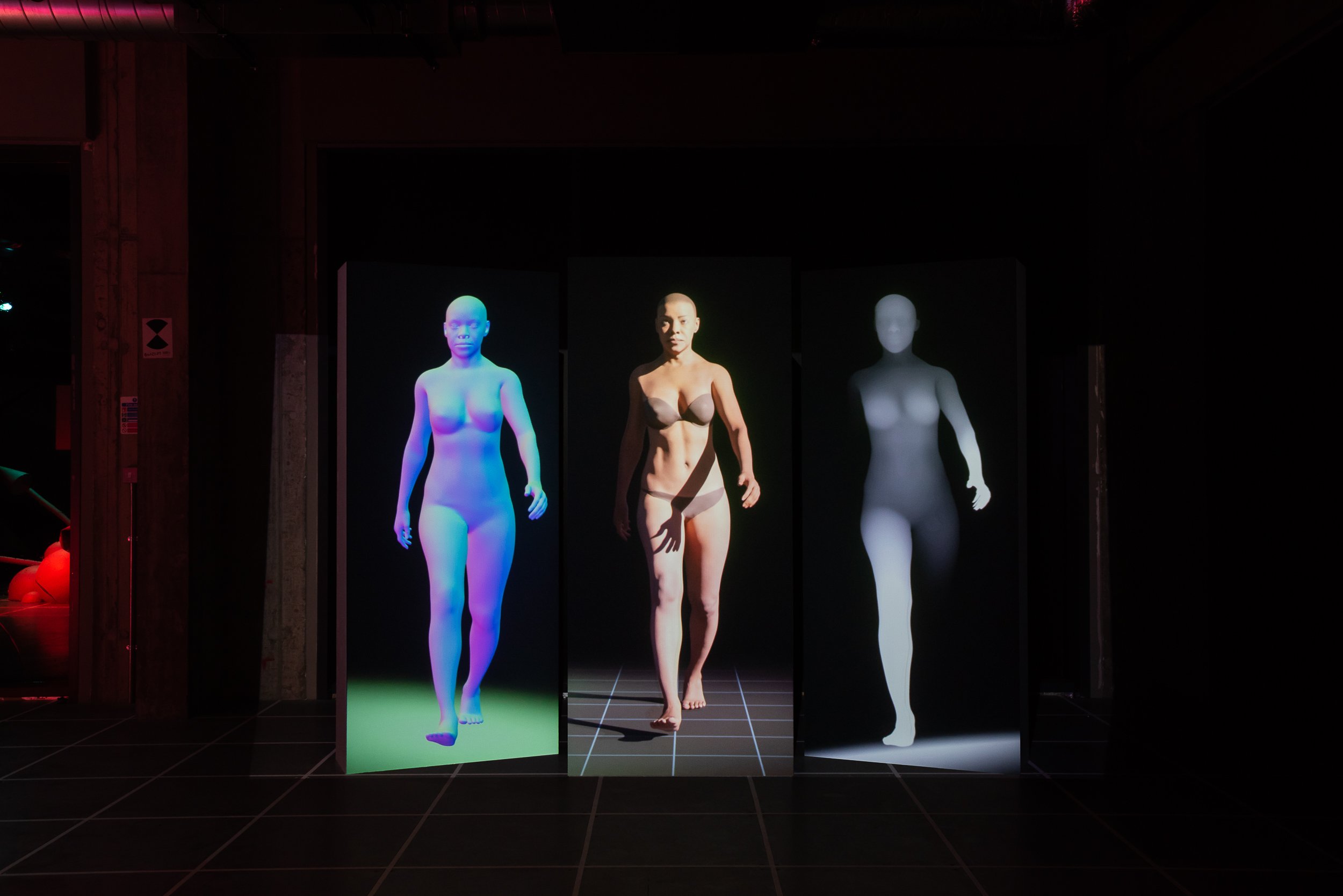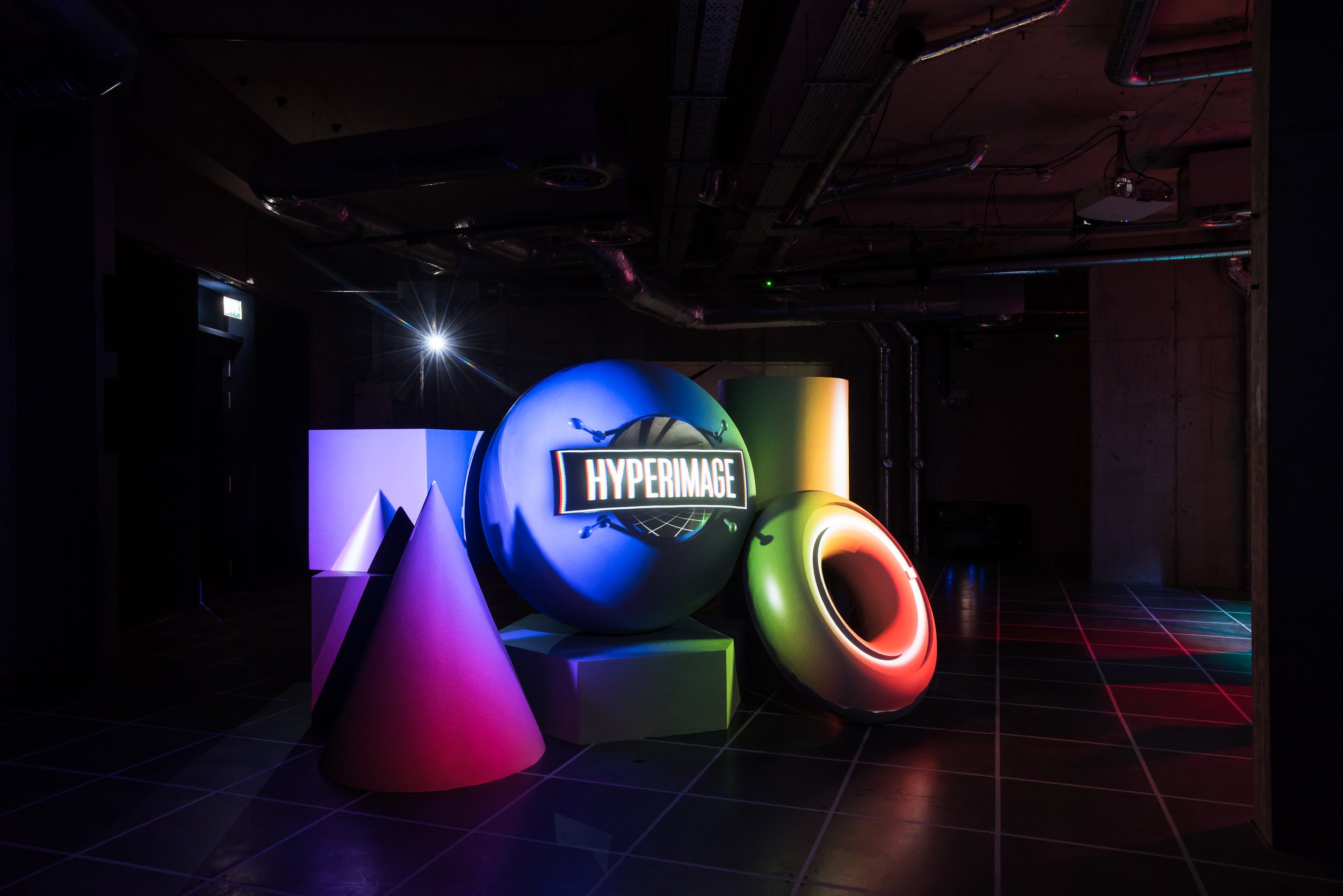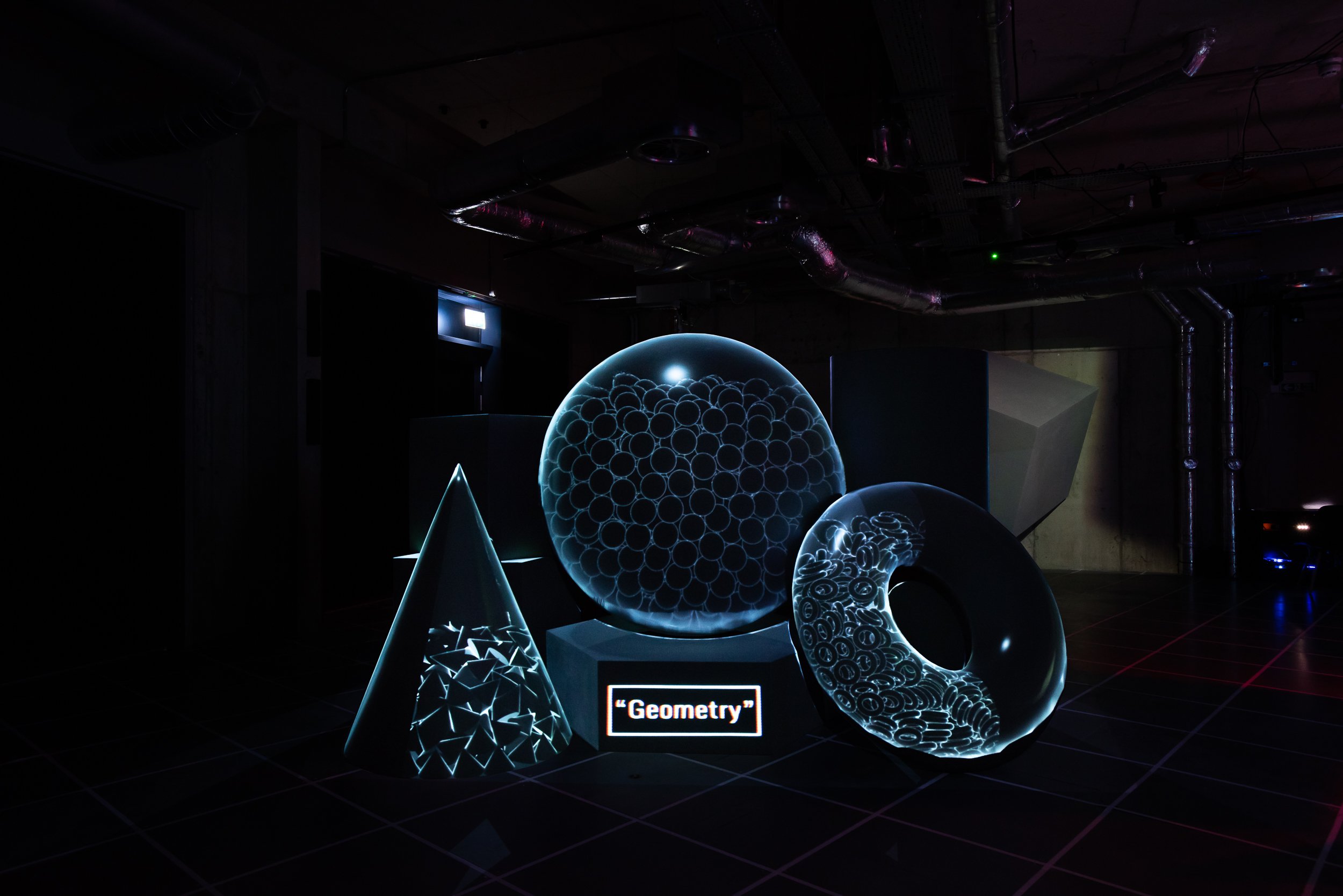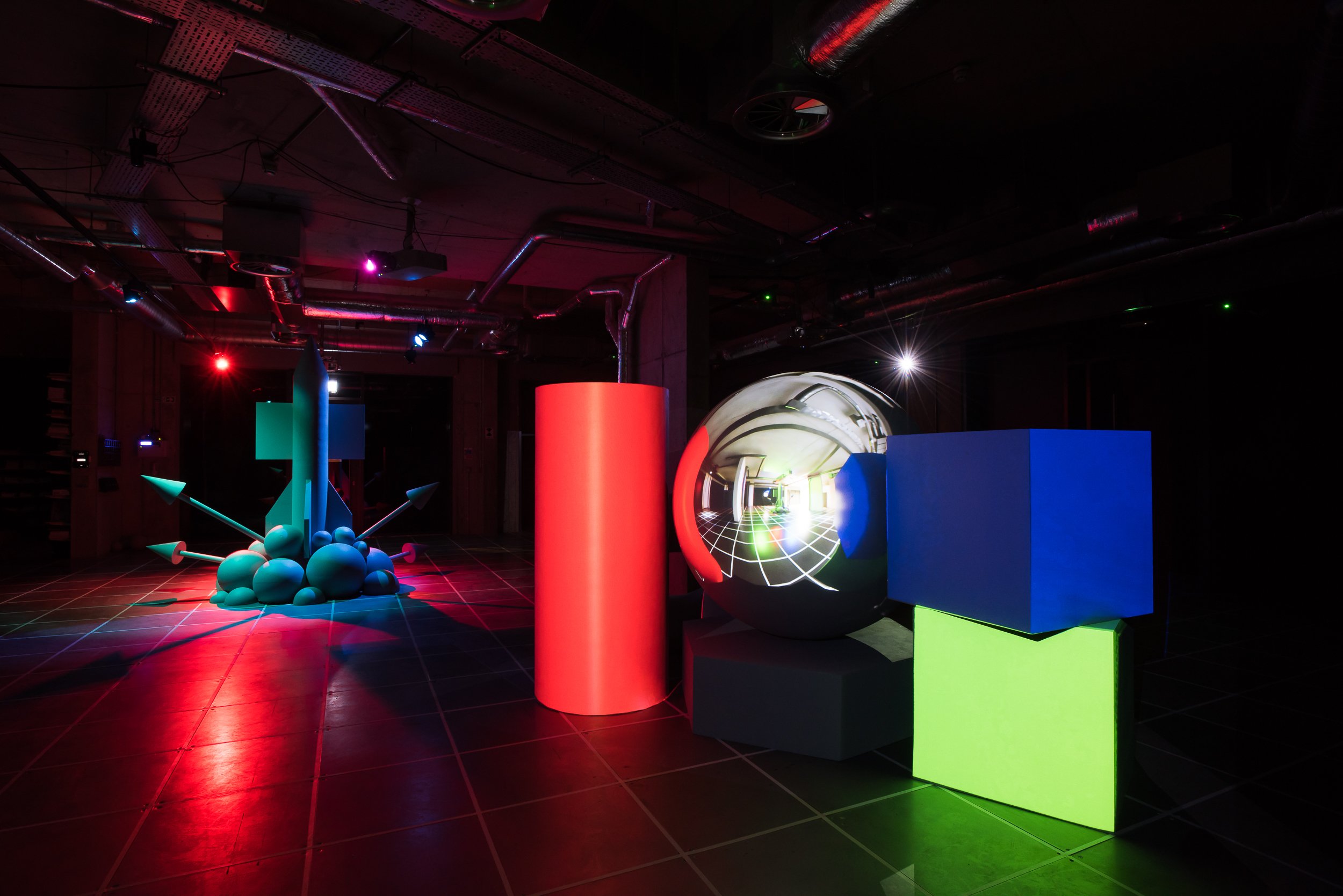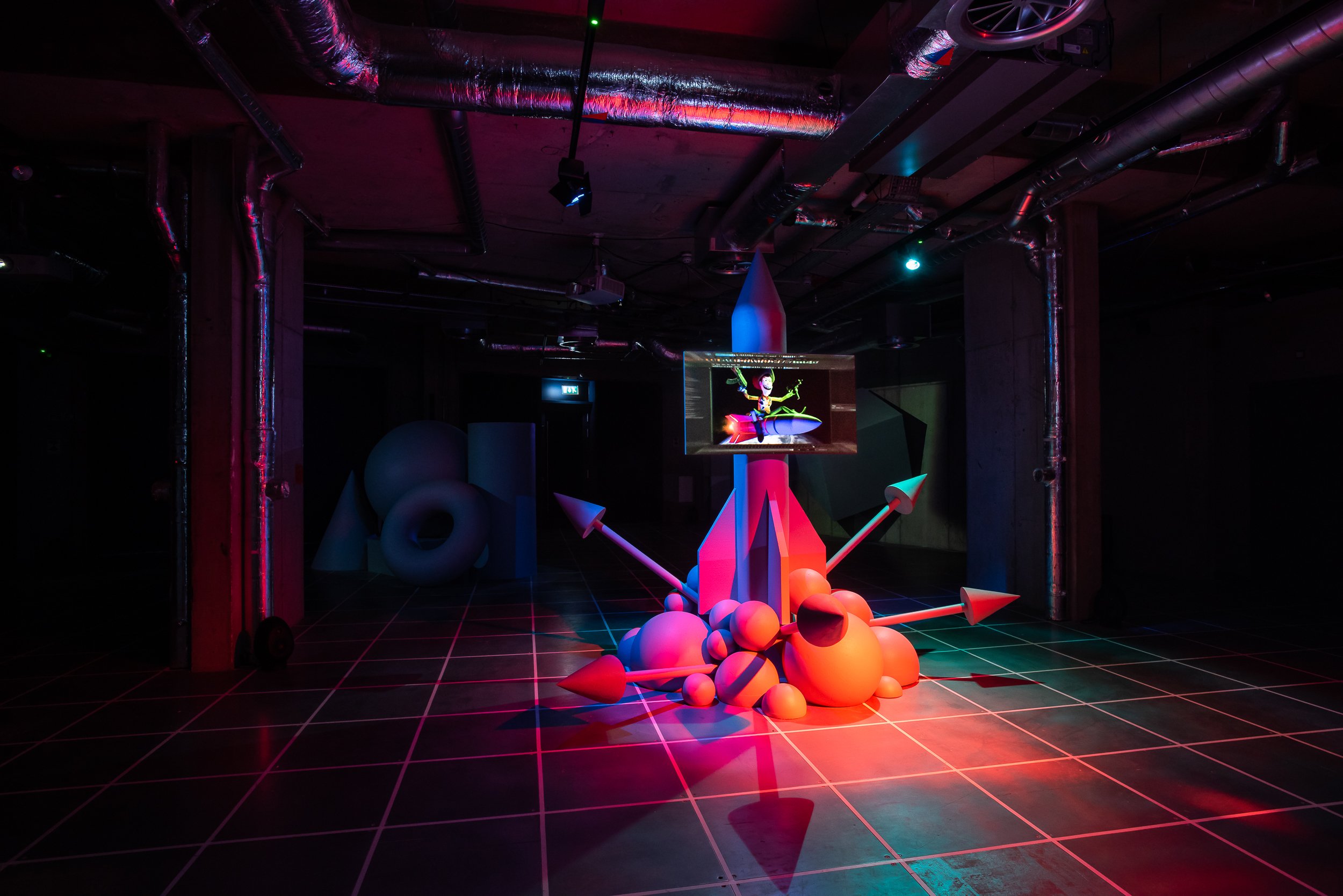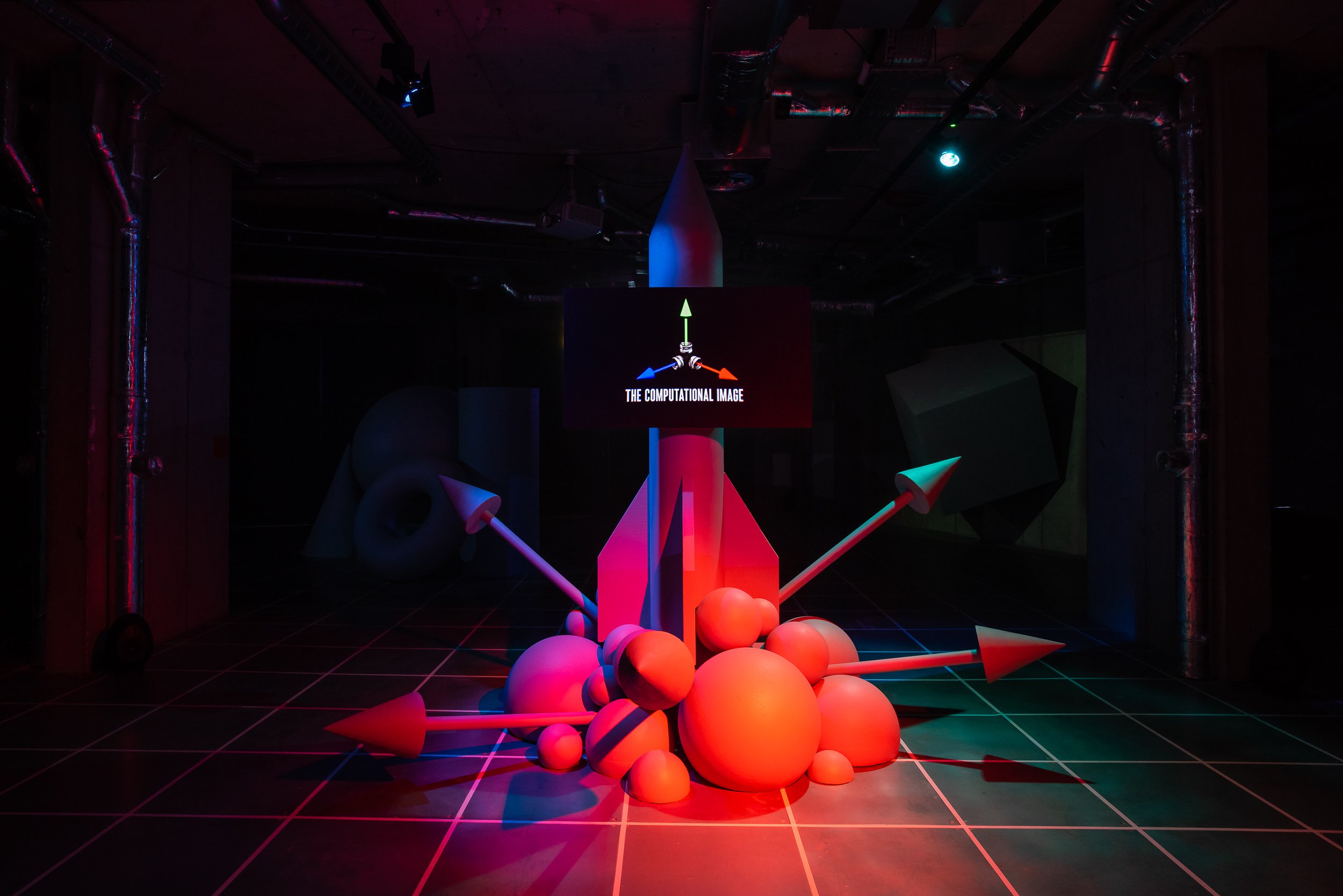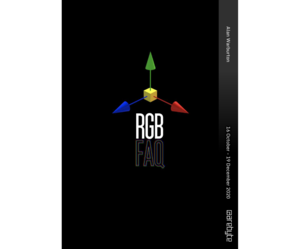RGBFAQ
Alan Warburton
Part of arebyte 2020 programme Systems
17 Oct - Tue 15 Dec 2020 and 17 May - 30 May 2021
arebyte Gallery presents a new commission by UK based artist Alan Warburton. RGBFAQ comprises a research-led experiential exhibition in which the audience navigates a "black-box" set populated by gigantic geometric sculptures. Warburton’s ambitious new video essay will be projection mapped onto this sculptural background, expanding the form of his popular video essays (Goodbye Uncanny Valley, Fairytales of Motion) into an immersive 3D space, with a soundtrack by David Kamp.
-
This post-photographic origin story bridges x-rays and z-buffers, radar and Pixar, video games and machine learning, concluding with insights into how synthetic data is changing the nature of vision forever. Informed by the latest development in machine learning and computer graphics, as well as Warburton’s ten years working in animation, RGBFAQ puts viewers inside software, and inside software history.
“My process is like a comedian developing a set, but without the laughs,” says Warburton, who describes this spatial video essay as “a cross between a software tutorial and a ghost train ride that channels an episode of late 80s Tomorrow's World”
Alan Warburton’s work was most recently seen at Somerset House, where he was an artist in residence until 2019. As part of 24/7, which explored the non-stop nature of modern life, he presented a series of 3D-scanned self-portraits depicting his worktime naps in a visual effects studio in Beijing. Since then, RGBFAQ has been developed as part of Warburton’s PhD at Birkbeck, and has been workshopped around the world (Fiber Festival, Mutek Montreal, Carnegie Mellon, the Victoria and Albert Museum, The Architectural Association and the ICA). RGBFAQ will be Alan Warburton's first UK solo exhibition.
About RGBFAQ
RGBFAQ traces the trajectory of computer graphics from WW2 to Bell Labs in the 1960s, from the visual effects studios of the 1990s to the GPU-assisted algorithms of the latest machine learning models. The story culminates with the emergence of the synthetic dataset: computer-generated images used as ‘ground truth’ for training computer vision algorithms. Synthetic data is increasingly sought after as a ’clean’ alternative to real world data sets, which are often biased, unethically sourced or expensive to create. And while CGI data seems to avoid many of these pitfalls, Warburton’s argument aims from the outset to consider whether the virtual world is as clean and steady as we think. He carefully catalogues the ‘hacks’ used to construct the foundations of simulated worlds, clearly suggesting that the solutions of early computer graphics might be less than ideal material on which to build the foundations of yet another generation of technology.
RGBFAQ excavates these foundations, bringing forth a battery of forensic evidence that undermines what we think of as the image, supplying us instead with the far more unpredictable, colourful concept of the ‘exploded image’, a mode of seeing that, as he demonstrates, originates in the tricky render economics of the early 2000s but like many new technologies, has unexpected applications in surveillance, entertainment and behavioural science.
The concept of the exploded image (or his alternative ‘hyperimage’) articulates the slipperiness inherent in all discussion of digital aesthetics. The image discussed in RGBFAQ bridges XYZ and RGB, space and colour, data and aesthetics, machine and human, weapon and tool. Warburton makes it clear that while many might mistake a contemporary image for a plain, traditional photograph, it has long been something far more than that; a decoy, a classically Baudrillardian simulacra.
If RGB leaves us with a sense of the power of digital imaging technologies (and perhaps the feeling of an accident waiting to happen) it also manages to speak of wonder and empowerment: the kaleidoscopic possibilities for interpretation, intervention and synthesis that the exploded image allows.
Research Supported by the Centre for Creative Inquiry at Carnegie Mellon University and CHASE.
ARTIST BIO
Alan Warburton is a multidisciplinary artist exploring the use of software in contemporary culture. His hybrid practice feeds insight from commercial work in post-production studios into experimental arts practice, where he explores themes including digital labour, gender and representation, often using computer-generated images (CGI).
His work has been commissioned, screened, exhibited and broadcast internationally at BALTIC, Somerset House, Ars Electronica, CTM Berlin, National Gallery of Victoria, Carnegie Museum of Art, Austrian Film Museum, Laboral, HeK Basel, Photographers Gallery, London Underground, Southbank Centre, Channel 4, Cornerhouse, Denver Digerati and Adult Swim. Alan was in residence at Somerset House Studios until 2019.
His online video essays Goodbye Uncanny Valley and Spectacle, Speculation, Spam have been widely shared among a new generation of students, artists and curators keen to reflect on the critical potential of CGI.

